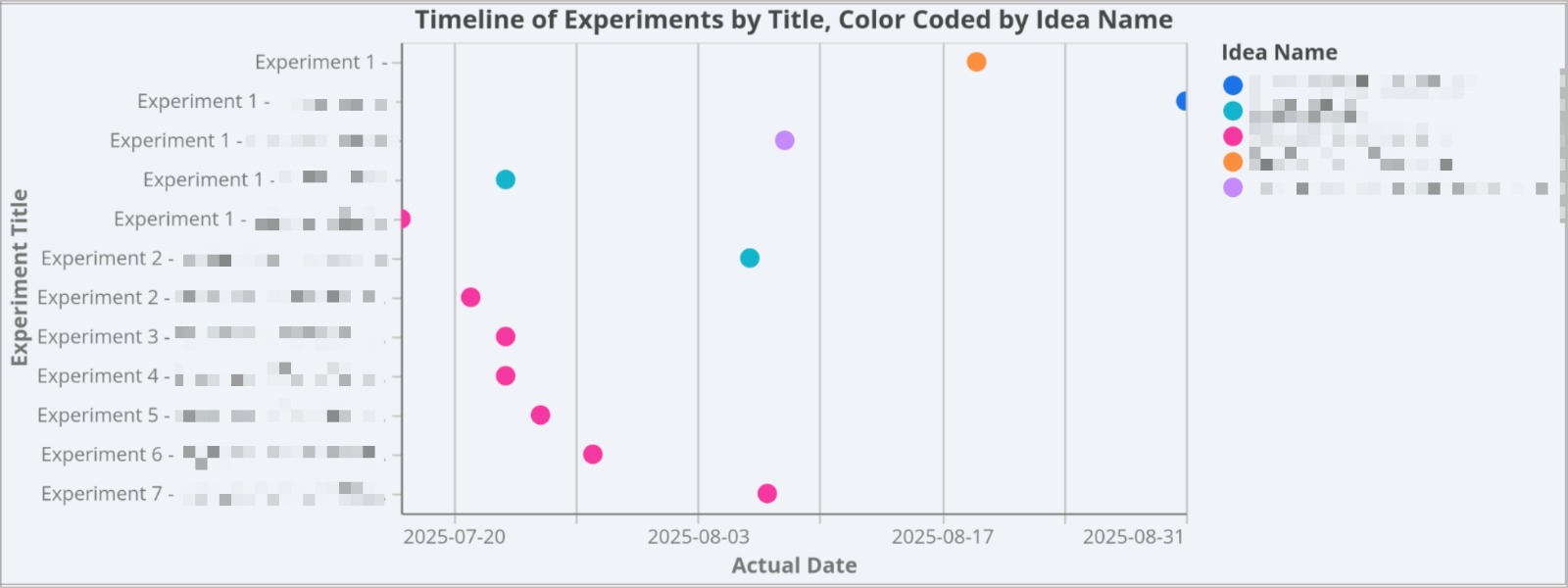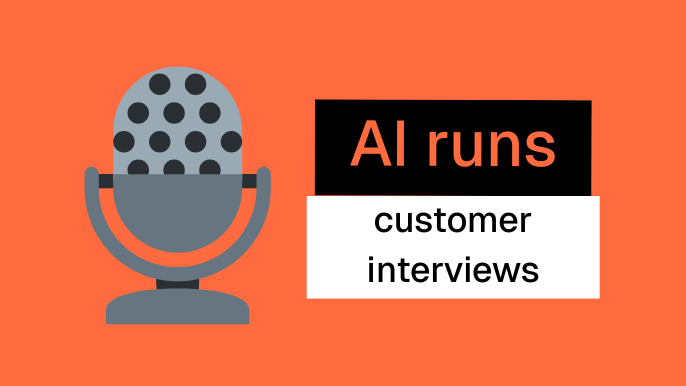July 2025: 12 experiments in 3 weeks. Here's what happens when teams prioritise velocity over perfection

12 experiments in 3 weeks. Here's what happens when teams prioritise velocity over perfection.
Hi,
July was a rewarding month working with a financial services team. We set an ambitious target: go from zero experimentation muscle to running multiple concurrent experiments in 4 weeks.
The results blew me away.
24 ideas captured. 12 experiments designed and run. 500+ customers engaged.
But the real transformation wasn't in the numbers; it was watching a team shift from "let's build this" to "let's test if anyone wants this."
Let me share what made the difference.
Leslie
If you're struggling to get your team to experiment faster, hit reply. I'd love to hear what's blocking you.
Spotted in the wild:
Three things I learned about building experiment velocity that you can apply immediately:
1. Time to first experiment beats time to perfect experiment
The team's first experiment was clunky. Tracking wasn't perfect. The message could have been clearer.
They launched it anyway.
Result: 20% engagement rate on their very first try.
The insight? Getting data from real customers in week one taught them more than another month of planning would have. Speed creates learning momentum that perfectionism kills.
2. "Data over opinion" becomes cultural DNA
By week 3, something shifted. Instead of debating whether customers would want a feature, they'd say "let's test it."
One experiment failed at 15% when they added pricing. Instead of defending the idea, they immediately started designing the next test.
The magic happens when teams stop being precious about their ideas and start being curious about customer behaviour.
3. Concurrent experiments compound learning
Weeks 1-2: One experiment at a timeWeeks 3-4: 2-3 experiments running simultaneously
The breakthrough wasn't just running more tests—it was seeing patterns across experiments. What worked for monthly subscriptions also worked for security features. Customer psychology insights from one test informed three others.
Parallel experimentation creates a learning flywheel that single tests can't match.
The bottom line:
Most teams I work with are stuck in analysis paralysis. They want the perfect experiment, the perfect message, the perfect everything.
This team proved something different: imperfect experiments that ship fast beat perfect experiments that ship slow.

The 4-Week Rapid Experimentation Sprint:
Here's exactly how we transformed a team from zero experiments to running 3 concurrent tests:
Week 1: Foundation training and first experiment launch
- Rapid Experimentation using Pretotyping One-Day Workshop
- Lean Canvas workshops to capture customer perspective
- First Pretotyping hypothesis designed and live within 2 days
- Team learns "data over opinion" mindset
Week 2-3: Scale to multiple experiments
- 2-3 experiments running simultaneously
- Daily check-ins and experiment design workshops to replace endless planning meetings
- Focus shifts from perfection to velocity
Week 4: Results and sustainable process
- Retrospective on what worked (and what didn't)
- Framework for ongoing experimentation
- Team equipped to continue without external support using Rapidly software.
The outcome? A sustainable innovation engine that runs experiments as business-as-usual, not special projects.
Want to build this muscle in your team?
The framework is simple:
- Start with customer problems, not solutions
- Test one variable at a time
- Set clear pass/fail criteria upfront
- Launch in 8 days maximum
- Learn, adjust, repeat
But simple doesn't mean easy. It requires shifting from "build first, validate later" to "validate first, build smart."
That's the cultural transformation that creates sustainable innovation velocity.
Building experiment velocity in your company? I work with leadership teams to embed rapid experimentation as a core capability, increasing confidence in investing in the right products. Reply if you want to explore what this looks like for your business.
One thing
I used Ideaboardz for the retro, copied it into Claude.ai during the live session and prompted
‘we're running a brainstorm session to retro the rapid sprint project at [clientname]. Group and cluster these ideas’.Instant 10x gain on time and quality of output.

Tool of the Month
AkiflowAfter years of task management overload, I've finally found my solution in Akiflow. I was drowning in Sunsama, Asana, Slack, Trello, starred emails, Pipedrive, and countless task lists. Akiflow brings everything into one view with tasks and calendar unified. This single source of truth has dramatically reduced my overwhelm and brought clarity to my daily planning. Game changer for my workflow!
More blogs

What happens when AI runs your customer interviews?
Newsletter October 2025: What happens when AI runs your customer interviews?

September 2025: Is Experimentation Dead in the Age of AI?
September 2025: Is Experimentation Dead in the Age of AI? AI accelerates the build, but only experimentation tells you what customers actually want.
.png)
AI + Experimentation Resources
Experimentation Tools Directory: 10 Essential Tools for Innovation Teams. From AI assistants and design platforms to market research and analytics tools, covering the complete experimentation lifecycle from ideation to review. Experimentation tools include ChatGPT, Figma, Framer, Synthetic users, Rapidly and Heatseeker.
